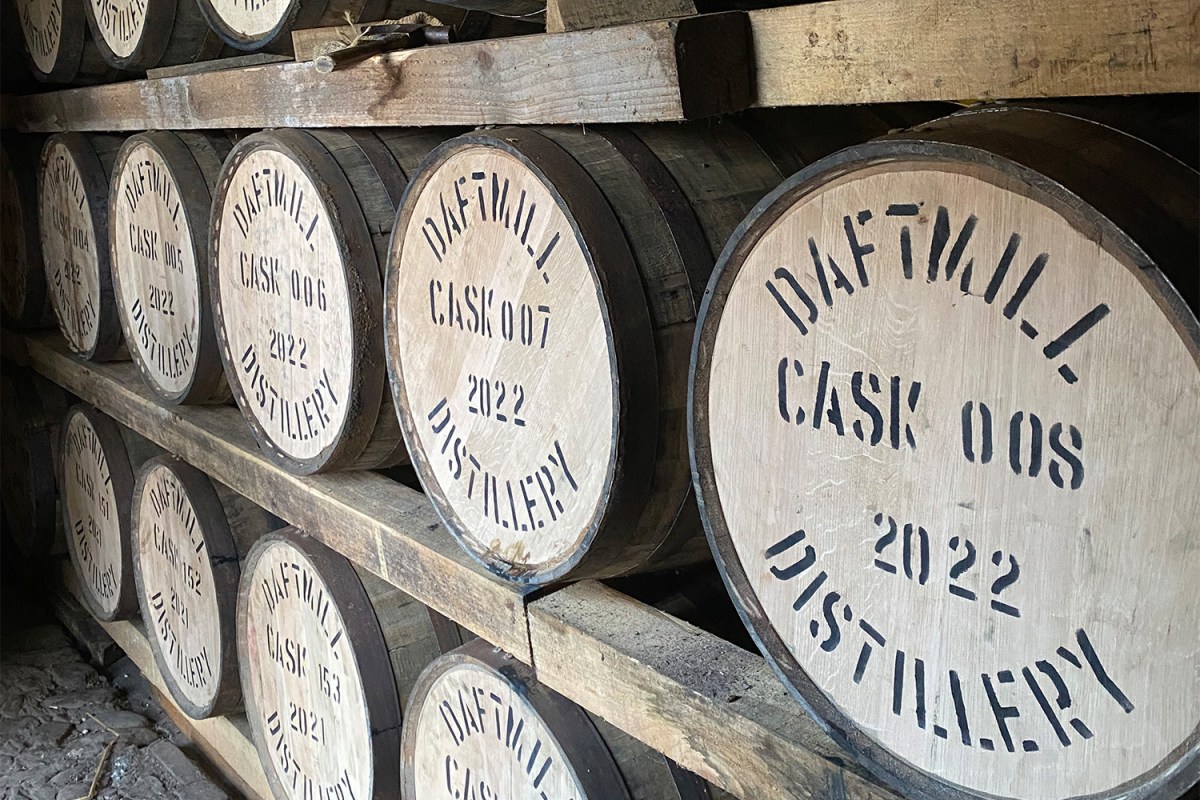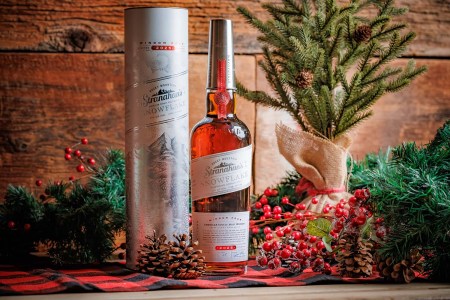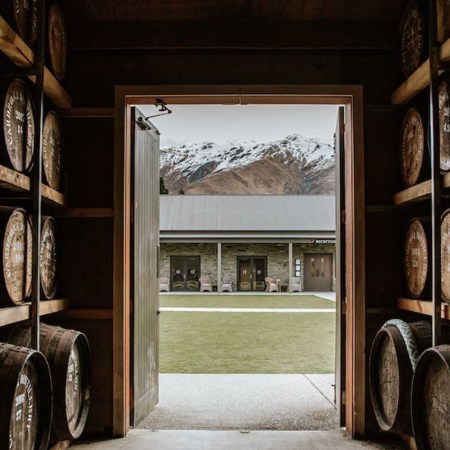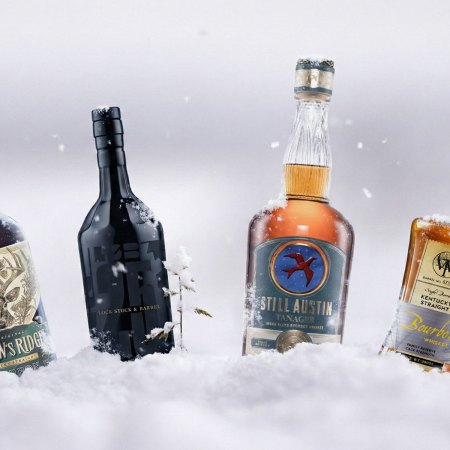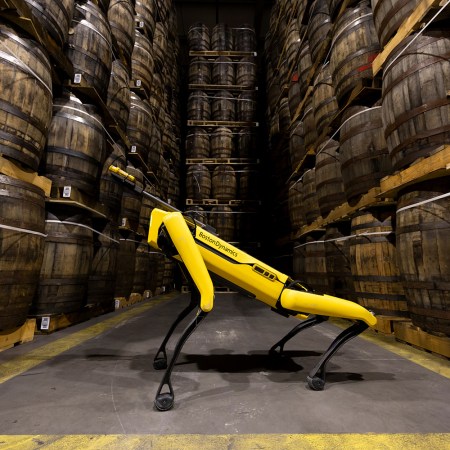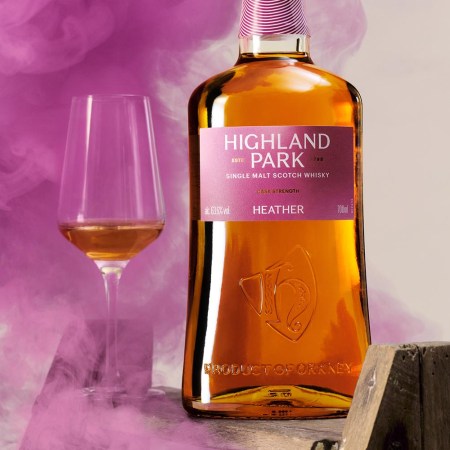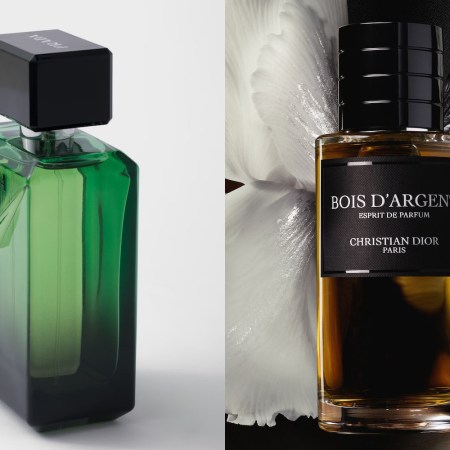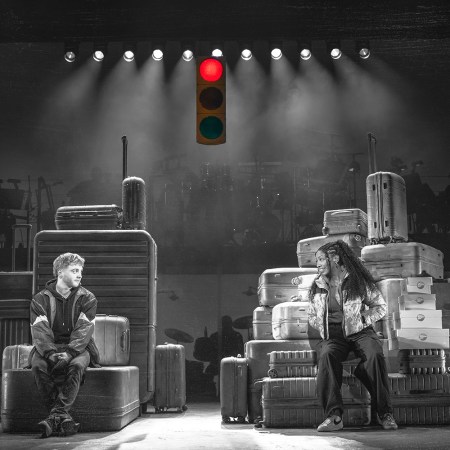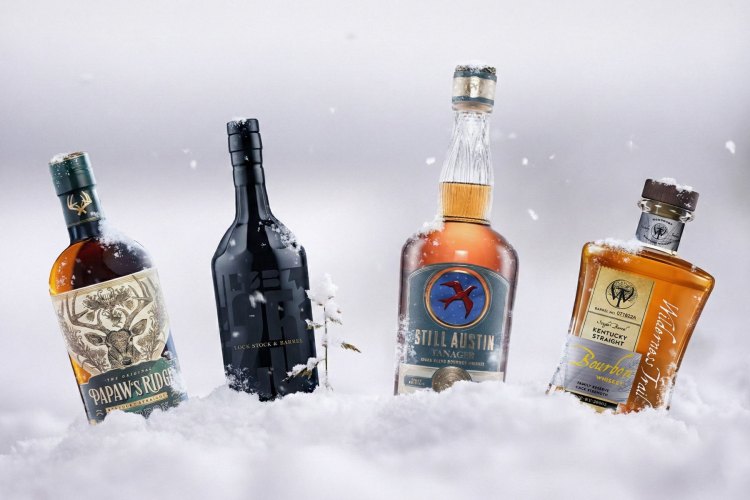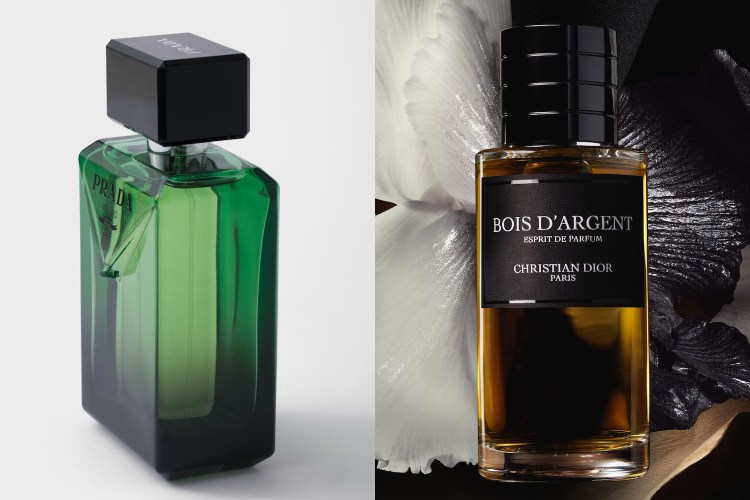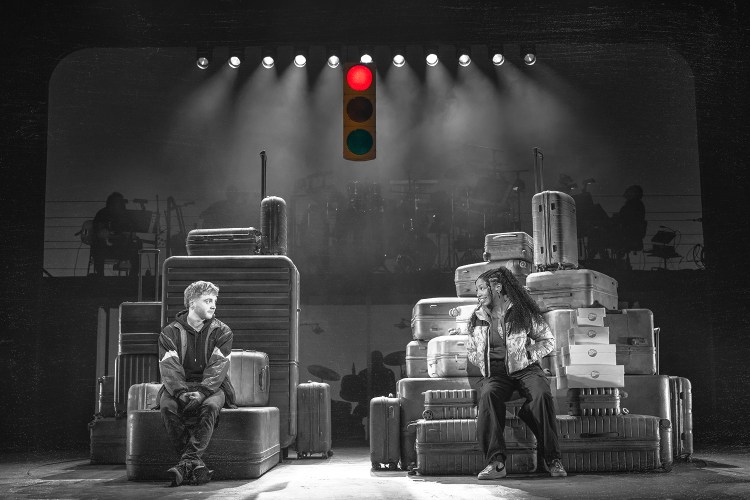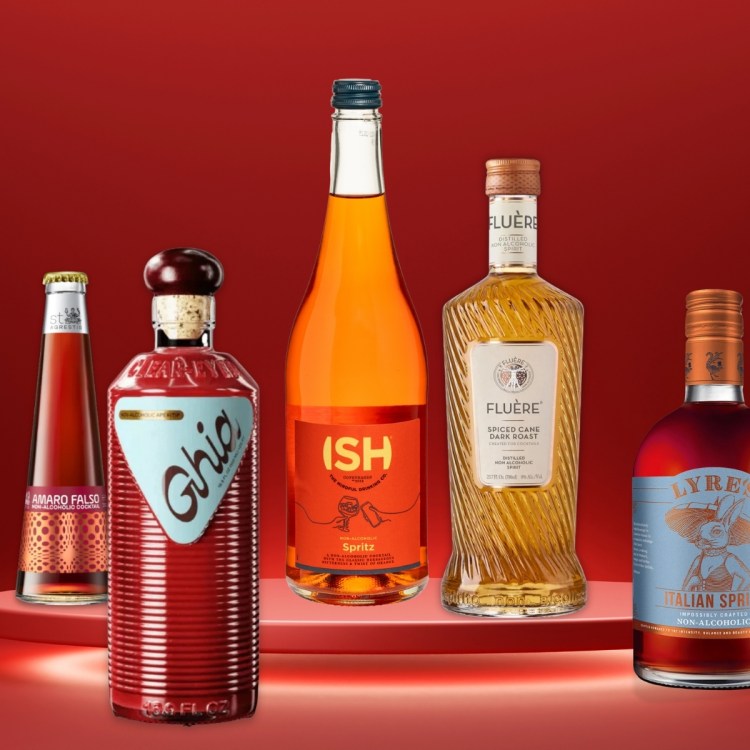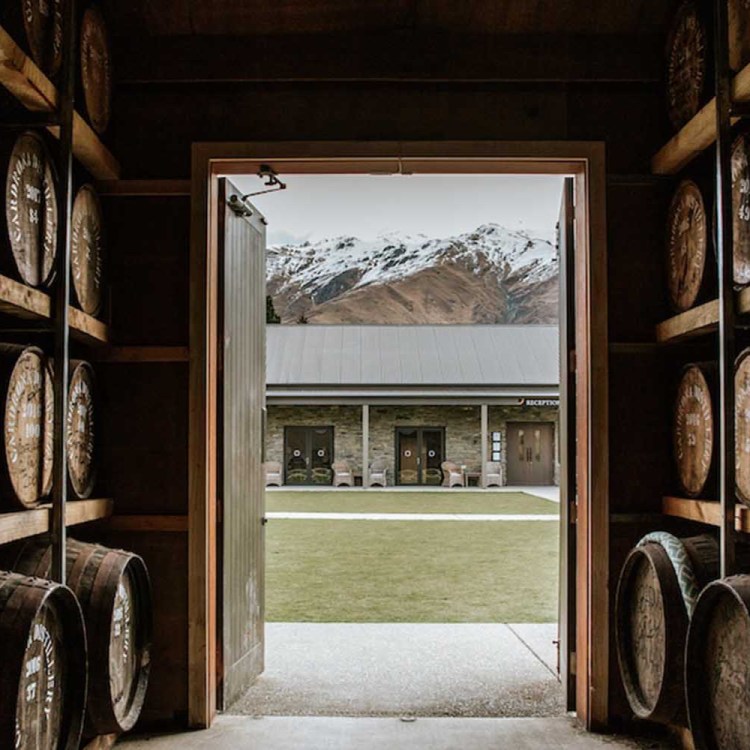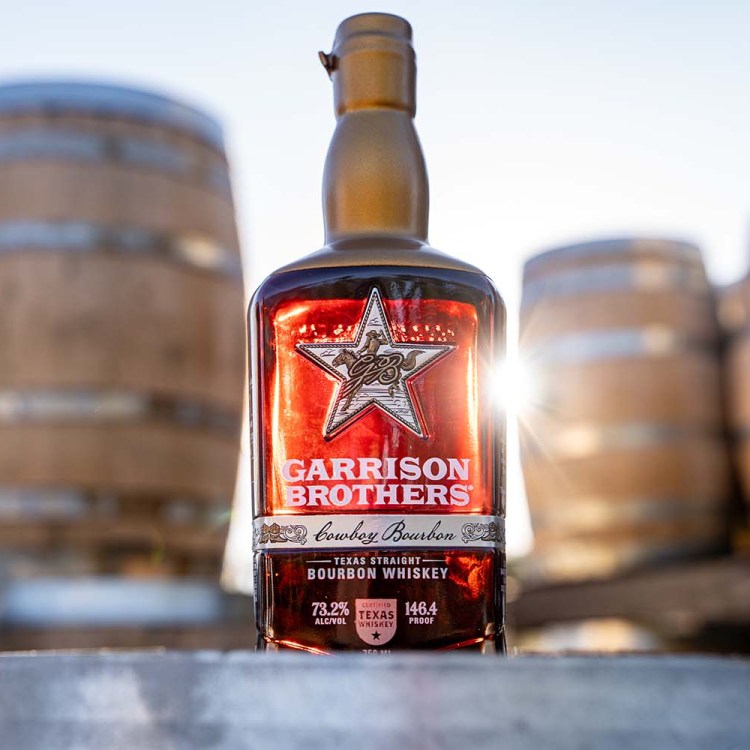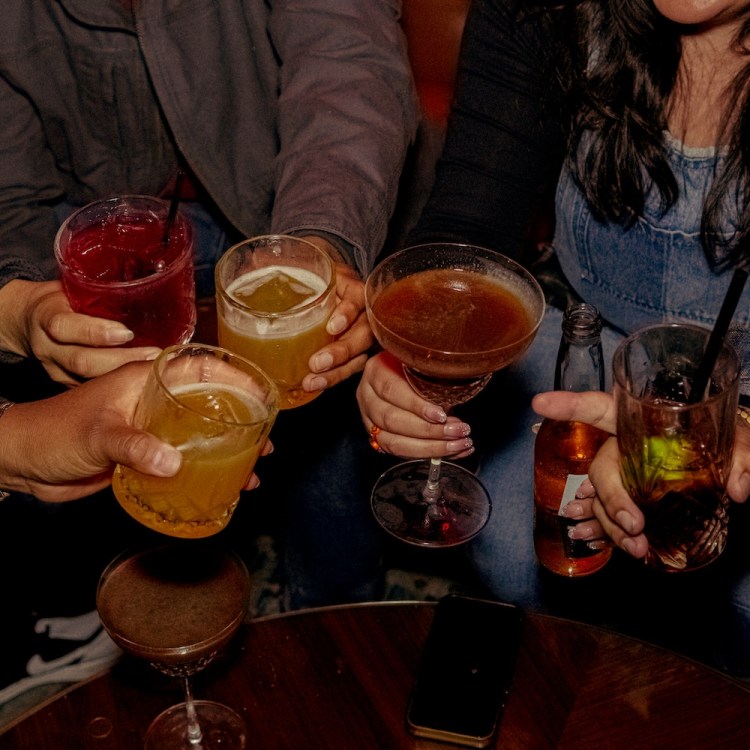The blue-raspberry sedan lumbered down the drive of the most reclusive whisky house in Scotland with all the conspicuousness of an octopus in tap shoes. It came to stop in the courtyard, surrounded by 18th-century brick buildings, and the driver got out, wearing an optimistic grin and polo that matched the car. No doubt he was looking for, hoping for, a bottle, a taste even, of Daftmill Distillery Scotch. Poor bastard.
Inside the still room, whose green-framed picture windows look out on the courtyard, Francis Cuthbert was midway through a treatise on hydrometer measurements when he noticed the intruder. “Maybe just a picture…” he muttered to himself, peering at the driver snapping exterior shots with his iPhone. When the man continued toward the still room, Francis sighed and excused himself.
“Are you open?” the man called out.
Francis did his best Roy Kent: “NO.”
“Do you know if you’ll be open anytime soon?” he asked, no doubt expecting an answer ending in ‘-day.’
“June.”
It was March, by the way, fallow time at Daftmill, where Francis has been producing rare and lovely whisky exclusively from his own barley — an extreme rarity in Scotland — since 2005. Not that the timing mattered. Even when he’s distilling for a few months each summer and winter, it’s not like you can just pop on over and shop. Unlike the many tourist-courting distilleries, where, Francis said, “they’re selling the key rings and tea towels before they even distill,” there are no public tours or tasting rooms or bottle boutiques at Daftmill, which is nestled in the agricultural bosom of the Fife peninsula, less than an hour northeast of Edinburgh. “We do get a lot of people who come by and try to buy a bottle,” he said, watching the car, rebuffed, sulk out of the drive, “but I don’t sell whisky at all.”
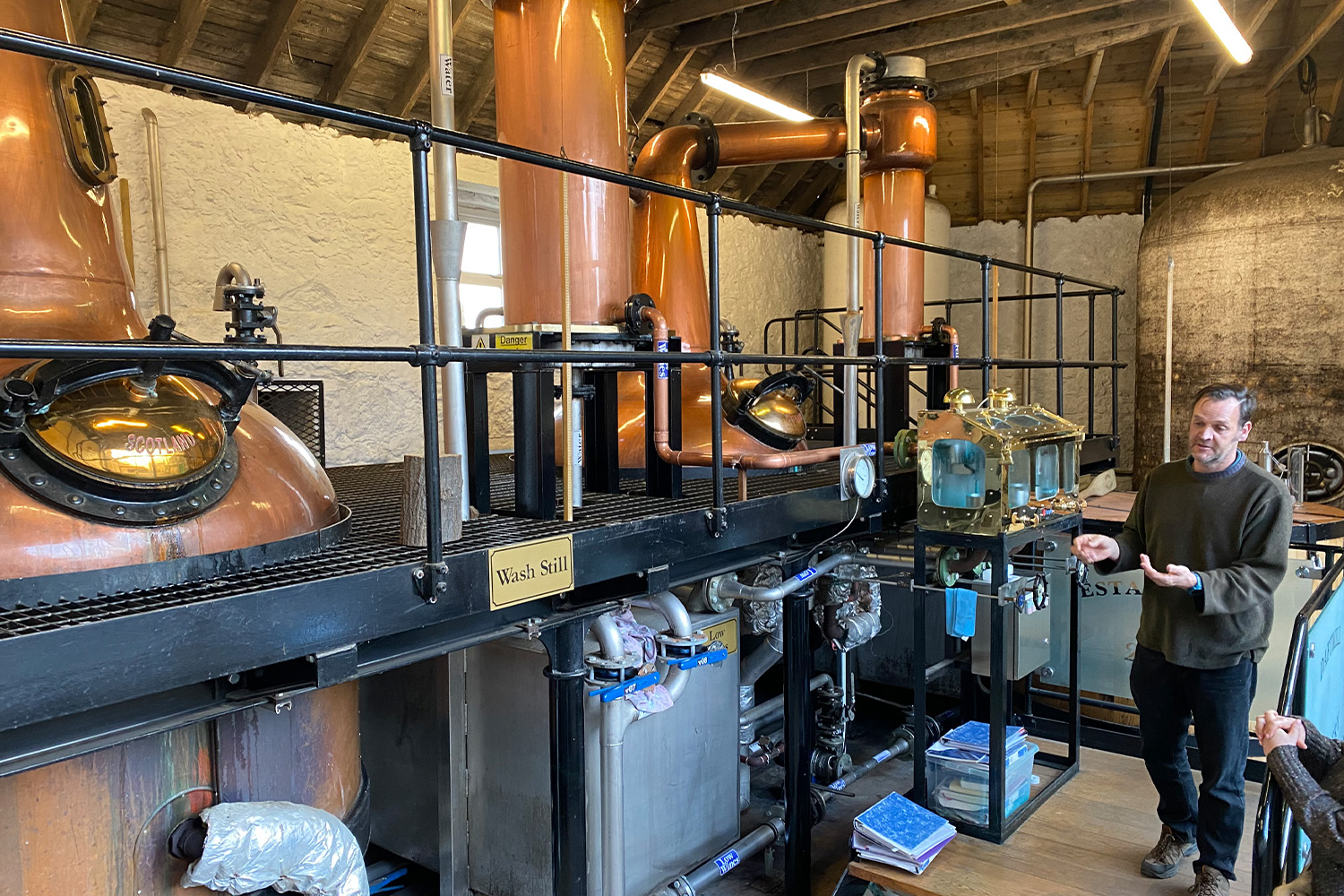
Daftmill’s distributor, Berry Bros. & Rudd, handles that nasty business. One third of each semiannual release remains in the U.K., sent to stores like Luvian’s Bottle Shop, four miles down the road in Cupar, where hopefuls register through a lottery system months in advance. The other two thirds get exported. Last year, just 1,680 bottles of the coveted single malts made their way to the U.S. You might find a straggler in Spokane or Dallas, collecting dust at a liquor store where people don’t know any better, but more likely, they’re gone before they can even hit the shelves. Here and internationally, that scarcity fuels a red-hot secondary market where vintages fetch multi-thousands in online auctions. In a 2020 benefit for indie Scottish whisky bars, for example, Whisky Auctioneer raised 35,000 GBP on seven never-before-released bottles of single-cask 2008.
Why all the fuss? Francis shrugged. “We don’t do anything radically different from anybody else; we try and do everything as well as we can,” he said as we stepped into the cool, enveloping, stone-walled darkness of the Daftmill barrel house. “I’m just a farmer who moonlights as a distiller.”
Since the turn of the 1800s, the Cuthbert family has worked the sandy, gravelly soil of the Pitlair Estate as tenant-farmers for the Walker clan, barons of the jute industry in Dundee. They were able to by 1,000 acres in 1984 and grew mostly barley for the local maltster, which sent the product onto its portfolio of distilleries. “In the early 2000s, the price of malting barley barely covered the cost of growing it,” Francis explained. “It starts you thinking, we could be doing something else…” In 2002, he and his brother, Ian, determined that something else would be a distillery and barreled their first run in 2005. Given the small amount they were able to produce, they knew they needed a high price to cover the costs. “We didn’t believe people would pay a premium for a young whisky. We needed time.”
This Is Why People Line Up for Days to Buy Stranahan’s Snowflake
The 2025 limited release from the Denver distillery showcases a tropical side of American Single Malt whiskyFarmers are good with time, and every aspect of Daftmill production is steeped in patience. Francis ferments his mash for double the hours of industry standard, to capture the fullest bouquet of delicate, fruity esters produced when the bacteria in the barley have fully feasted on the yeast cells. While some distilleries fast-forward the oak-aging process through artificial temperature manipulation — as temps rise and fall, wood expands and contracts, imparting those caramel and vanilla tones into whisky — Francis slows down the process. “These are thick walls, with very slow temperature fluctuations,” he said, patting the exterior stonework of the Daftmill barrel house. “It takes many months to warm up, and come October, it takes months to cool down. It’s the same [process] but much gentler.”
What doesn’t come naturally to Francis: the marketing grease and promotional bombast borderline-required in today’s competitive whisky industry — even in Britain, where the cultural DNA discourages look-at-me behavior. Francis’s factory settings are pretense-suspicious, bullshit-allergic, and chronically self-deprecating. “We are not highly talented, so we just thought, We’ll just make the whisky as good as we can, and that’ll make it much easier to sell.”
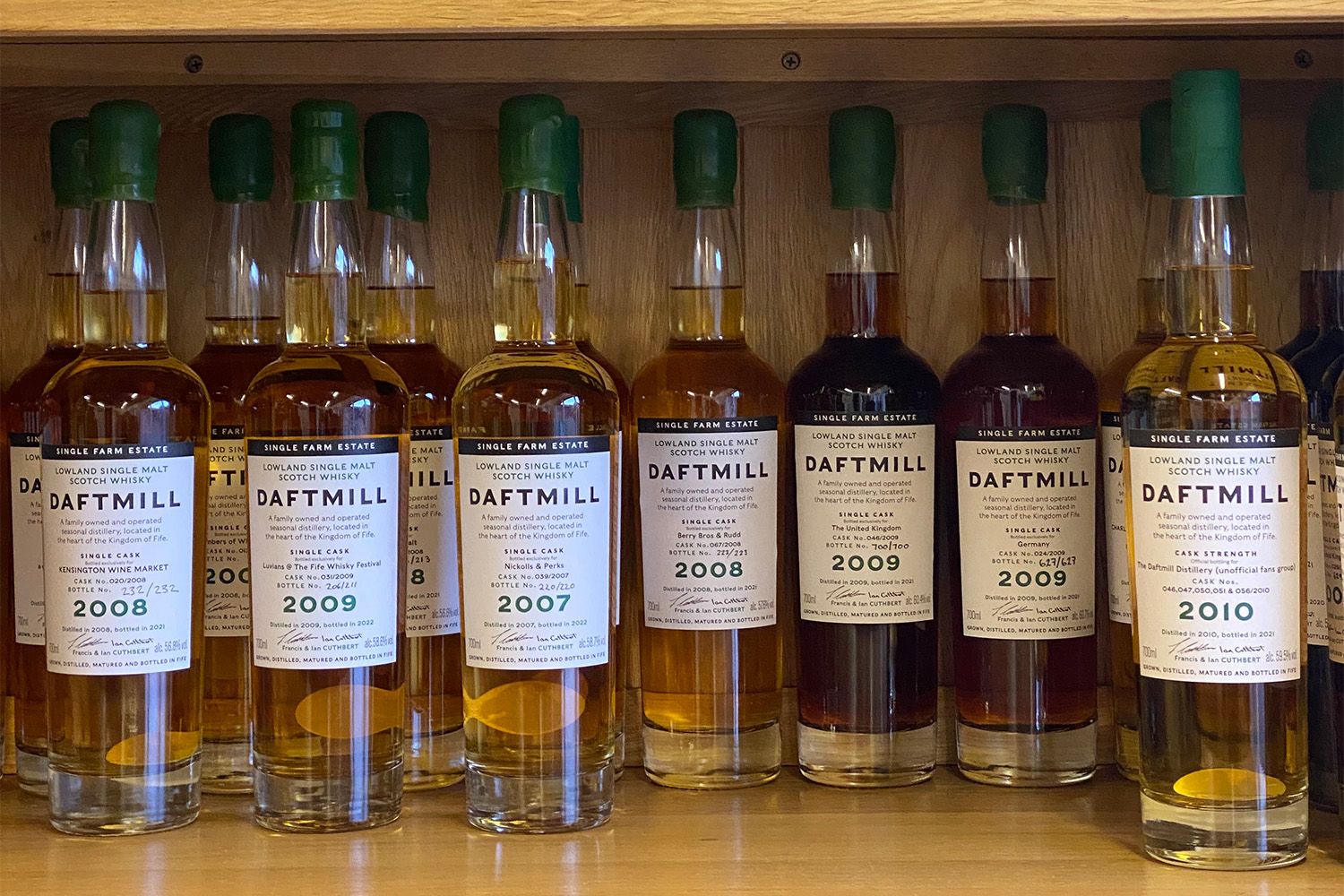
Which proved to be a better strategy than any trinket or campaign. Daftmill bottled and released 629 units of its inaugural 2005 Scotch in 2018, earning 91 points from Whisky Advocate, which waxed poetic about its “soft and floral [nose], with peaches, walnuts, coconut, warm caramel and milk chocolate,” before declaring it, “Well worth the wait!” The average price of that vintage in the secondary market, according to Wine Searcher, is just over $4,300.
We stepped into the cool, enveloping darkness of the barrel house, lined with racks on racks of liquid rested in ex-Heaven’s Hill Bourbon (and a few sherry) casks, some dating to 2007, the distillery’s third-oldest vintage. Francis pointed to the barrel and asked the question I’d been waiting to hear. “Like to try a dram?”
Just across the courtyard in his office, Francis plucked the 2007 winter release from a handsome sideboard containing his private stash. The liquids inside formed a shimmering ombre of golds and browns, from sun-bleached straw of the 2007 to the amber root beer of the 2009 single-cask #46. Each white label contains the production and bottling dates in pine-green lettering that matches the wax caps that matches the distillery’s window frames and wooden doors. It’s a recreation of Lowland Green, a legacy shade from Craig & Rose, the oldest paint-maker in the U.K., formerly based in Fife, though that’s not information you’ll find on the Daftmill website or in a press release. Details like this serve a greater story, of preservation and heritage, of place and process, of “just doing what farmers had done 200 years ago, converting something people didn’t want to pay for into something valuable.” Francis is making whisky, sure, but big picture, he’s shown a distillery can thrive in modern times on its natural, ancestral home, the farm.
“I never claim to be making the best whisky,” he said, pouring me a finger of the 2007, its individual tenors of magnolia and mace, vanilla and hay slowly swelling together like a Gregorian chant. If Francis won’t say it, after tasting a few more Daftmill single malts, I can: He’s making the best whisky. “It’s hard to live up to that hype,” he said, waving me off. “If I can put out a decent dram, I’m happy with that.”
Every Thursday, our resident experts see to it that you’re up to date on the latest from the world of drinks. Trend reports, bottle reviews, cocktail recipes and more. Sign up for THE SPILL now.
